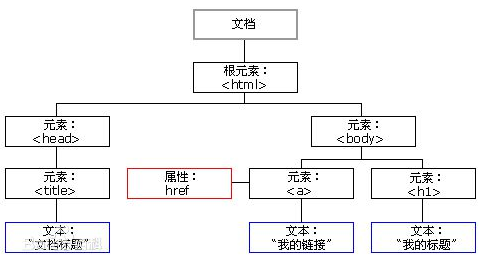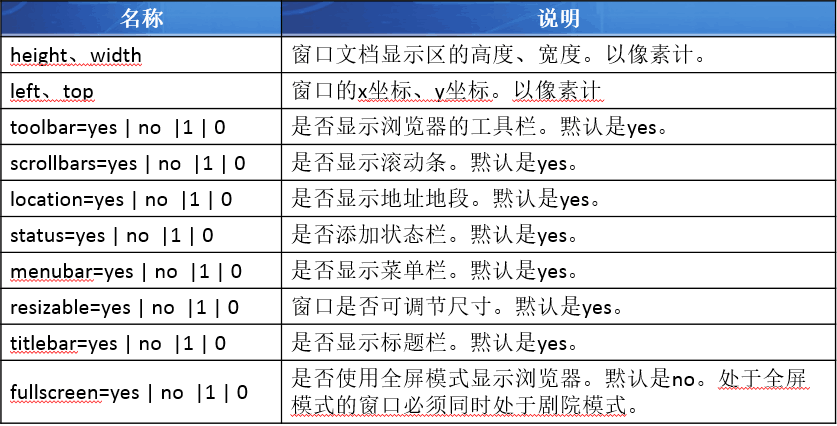
<!DOCTYPE html>
<html>
<head>
<meta charset="UTF-8">
<title>DOM代码详述(一)</title>
<script type="text/javascript">
window.onload = function(){
var div1 = document.getElementById("div1");//通过ID获取唯一的节点;多个同名ID只会取第一个
console.log(div1);
console.log(div1.tagName);//查看节点:①属性;获取节点的标签名
console.log(div1.innerHTML);//②设置或者获取节点内部的所有HTML代码
console.log(div1.innerText);//③设置或者获取节点内部的所有文字
console.log(window.getComputedStyle(div1,null));//查看所有属性(非IE属性)
console.log(div1.currentStyle);//查看所有属性(IE属性)
}
function getById(){
//取到元素节点的样式属性节点
var div1 = document.getElementById("div1").style;//获取
div1.backgroundColor = "#FF00FF";//行级样式表权重1000;所有节点属性,一律驼峰命名法
//取到元素节点
var divDoc = document.getElementById("div1");//获取
divDoc.innerHTML = "<s>king_land</s>";//重置修改div中的HTML代码
}
//——————————————分割线——————————————————
function getByName(){//通过Name取到一个数组,包含1到多个节点;
var div = document.getElementsByName("div1");
console.log(div.length);
//使用方式:通过循环,取到每一个节点,循环次数从0开始,<数组.length
for(var n = 0 ;n < div.length ; n++){
div[n].style.backgroundColor = "#FFFF00";
}
//div1.backgroundColor = "#FFFF00";
//div[0].style.backgroundColor = "#FFFF00";//★
}
//——————————————分割线——————————————————
//document.getElementsByTagName();//同Name
function getByTagName(){
var div = document.getElementsByTagName("div");
div[0].style.backgroundColor = "#00FF00";
}
//——————————————分割线——————————————————
//document.getElementsByClassName();//同Name
function getByClass(){
var div = document.getElementsByClassName("div1");
div[0].style.backgroundColor = "#00FFFF";
}
//——————————————分割线——————————————————
function getAttr () {
var img1 = document.getElementById("img1");
alert(img1.getAttribute("src"));
}//查看属性节点 getAttribute("属性名");
//——————————————分割线——————————————————
function setAttr () {
var img1 = document.getElementById("img1");
img1.setAttribute("src","../../2-CSS基础语法/img/bg_flower_multi.gif");
img1.setAttribute("style"," 100px;height: 100px;");
}//设置属性节点 getAttribute("属性名","属性值");
//——————————————分割线——————————————————
//JS修改样式总结
//1、.className:为元素设置一个新的class名字 例如:div1.className = "div2";
//2、.style:为元素设置新的样式 例如:div1.style.background-color = "blue";
//3、.style.cssText:为元素同时修改多个样式 例如:div1.style.cssText = "100px;height:200px;";
</script>
<style type="text/css">
.div1{
height: 100px;
100px;
background-color: #000000;
color: #FFFFFF;
line-height: 100px;
text-align: center;
}
</style>
</head>
<body>
<div id="div1" name="div1" class="div1">
这里是测试区
</div>
<div id="div1" name="div1" class="div1">
这里是测试区
</div>
<div id="div1" name="div1" class="div1">
这里是测试区
</div>
<img src="../../2-CSS基础语法/img/bg_flower_multi.gif" id="img1"/>
<br />
<button onclick="getById()">通过ID修改divcolor</button>
<br />
<button onclick="getByName()">通过Name修改divcolor</button>
<br />
<button onclick="getByTagName()">通过TagName修改divcolor</button>
<br />
<button onclick="getByClass()">通过ClassName修改divcolor</button>
<br />
<button onclick="getAttr()">取到img的src属性值</button>
<br />
<button onclick="setAttr()">修改img的src属性值</button>
</body>
</html>
[获取层次节点的常用属性]:
<!DOCTYPE html>
<html>
<head>
<meta charset="UTF-8">
<title></title>
<script type="text/javascript">
window.onload = function (){
//获取层次节点的常用属性
var ul1 = document.getElementById("ul1");
// var lis = ul1.getElementsByTagName("li"); //只取到ul1中所有li
// var lis = document.getElementsByTagName("li"); //取到页面中所有的li
console.log(ul1.childNodes);//获取元素的所有子节点(包含元素节点、文本节点)
console.log(ul1.firstChild);//获取元素的第一个子节点
console.log(ul1.lastChild);//获取元素的最后一个子节点
console.log(ul1.ownerDocument);//获取当前文档根节点,在html文档中为document节点
console.log(ul1.parentNode);//获取当前节点的父节点
console.log(ul1.previousSibling);//获取当前节点的前一个兄弟节点
console.log(ul1.nextSibling);//获取当前节点的后一个兄弟节点
//上述属性均会获得所有的元素节点和文本节点,如果只需要元素节点,需要使用对应Element属性,例如:firstChild→firstElementChild
console.log(ul1.attributes);//获取当前节点的所有属性节点
}
//——————————————创建并新增节点——————————————————
//方法一:.creatElement("标签名")创建一个新节点,需要配合setAttribute()方法设置属性;
//方法二:.appendChild(节点名)在元素的最后追加一个新节点
//方法三:.insertBefore(新节点名,目标节点名):将新节点插入到目标节点之前
//方法四:克隆对象.cloneNode(true/false):需要克隆谁,就用谁去调用克隆节点;传递参数可以为true/false,true表示克隆当前节点及子节点;false表示只克隆当前节点,不克隆子节点。
function appendImg(){
//1、创建一个图片节点
var img = document.createElement("img");
//2、给img节点设置属性
img.setAttribute("src","../../1-HTML基本标签/ivicon.png");
//3、将设置好的img节点追加到body最后
document.body.appendChild(img)//.setAttribute("src","../../img/2017-02-25_143342.png");
}
function insertImg(){
//1、创建一个图片节点
var img = document.createElement("img");
//2、给img节点设置属性
img.setAttribute("src","../../1-HTML基本标签/ivicon.png");
//3、在两个ul之间插入图片
var ul2 = document.getElementById("ul2");
document.body.insertBefore(img,ul2);
}
var count = 2;
function copyUl(){
//1、取到ul2节点
var ul2 = document.getElementById("ul2");
//2、克隆节点
var ul2Clon = ul2.cloneNode(true);
count ++;
ul2Clon.setAttribute("id","ul"+count)
//3、在原ul2节点之前,插入新克隆节点
document.body.insertBefore(ul2Clon,ul2);
}
//——————————————删除和替换节点——————————————————
//1、.removeChild(需删除节点):从父容器中删除指定节点;
//2、.replaceChild(新节点,被替换节点):用新节点替换被指定节点,如果新节点为页面中已有节点,会将此节点删除后替换到指定节点。
function deleteUl1(){
//取到ul1
var ul1 = document.getElementById("ul1");
if (ul1){
//从父容器body中删除ul1节点
document.body.removeChild(ul1);
}else{
alert("憋删了,早没了");
}
}
function ul1ReplaceUl2(){
var div = document.createElement("div");
div.setAttribute("style"," 100px;height: 100px;background-color: #20B2AA;");
var ul2 = document.getElementById("ul2");
document.body.replaceChild(div,ul2);
}
</script>
<style type="text/css">
ul{
600px;
list-style: none;
padding: 0;
background-color: #20B2AA;
display: flex;
justify-content: space-around;
margin-top: 20px;
}
</style>
</head>
<body>
<ul id="ul1">
<li>第一项</li>
<li>第二项</li>
<li>第三项</li>
<li>第四项</li>
</ul>
<ul id="ul2">
<li>第1项</li>
<li>第2项</li>
<li>第3项</li>
<li>第4项</li>
</ul>
<button onclick="appendImg()">在最后插入一幅图片</button>
<button onclick="insertImg()">在两个ul之间插入一幅图片</button>
<button onclick="copyUl()">copy一个ul2</button>
<br />
<button onclick="deleteUl1()">删除ul1</button>
<button onclick="ul1ReplaceUl2() ">用ul1替换ul2</button>
</body>
</html>
[创建新增节点]:
<!DOCTYPE html>
<html>
<head>
<meta charset="UTF-8">
<title>DOM操作表格</title>
<script type="text/javascript">
//表格对象:
//1、rows属性:返回表格中的所有行,数组;
//2、insertRow(index):在表格的第index+1行,插入一个新行;
//3、deleteRow(index):删除表格的第index+1行;
//表格的行对象:
//1、cells属性:返回当前行中的所有单元格,数组;
//2、rowIndex属性:返回当前行在表格中的索引顺序,从0开始;
//3、insertCell(index):在当前行的index+1处插入一个td;
//4、deleteCell(index):删除当前行的第index+1个td;
//表格的单元格对象:
//1、cellIndex属性:返回单元格在该行的索引顺序,从0开始;
//2、innerHTML属性:设置或者返回当前单元格中的HTMl代码;
//3、align(valign)属性:设置当前单元格的水平对齐方式;
//4、className属性:设置单元格的class名称。
function newRow(){
var book = prompt("书名:");
var price = prompt("价格:");
var table = document.getElementsByTagName("table");
//在表格的最后一行插入一个新行
var newRow = table[0].insertRow(table[0].rows.length-1);
//给新行设置单元格
var cell0 = newRow.insertCell(0);
cell0.innerHTML = book;
var cell1 = newRow.insertCell(1);
cell1.innerHTML = price;
getSum();
}
function deleteRow(){
var table = document.getElementsByTagName("table");
if(table[0].rows.length>2){
table[0].deleteRow(table[0].rows.length-2);
}else{
alert("删删删!删你妹啊删!")
}
getSum();
}
function changeTitle(){
var color = prompt("请输入6位十六进制颜色值:");
var table = document.getElementsByTagName("table");
table[0].rows[0].style = "background-color:#"+color;
}
function copyRow(){
var table = document.getElementsByTagName("table");
var copyRow = table[0].rows[table[0].rows.length-2].cloneNode(true);
var heJi = table[0].rows[table[0].rows.length-1];
//由于浏览器,自动将表格的<tr>包裹在<tbody>中
//所以<tr>实际并非<table>的子节点,故需取到<table>中的<tbody>进行插入;
if(table[0].rows.length>2){
table[0].getElementsByTagName("tbody")[0].insertBefore(copyRow,heJi);
}else{
alert("没有可以复制的行");
}
getSum();
}
function getSum(){
//取到当前表格 表格所有行
var table = document.getElementsByTagName("table");
var rows = table[0].rows;
//
if(rows.length<=2){
rows[rows.length-1].cells[1].innerText = 0 + "元";
alert("没有可计算的行!");
return;
}
//求和
var sum = 0 ;
for(var i = 1 ; i <= rows.length-2 ; i++){//第0行与最后一行舍弃1 rows.length-2
var cells = rows[i].cells;//取到单元格
sum += parseFloat(cells[cells.length-1].innerText);//最后一个单元格的 内容(innerText) 转化成数字并求和计算!
}
rows[rows.length-1].cells[cells.length-1].innerText = sum.toFixed(2) + "元";
}
window.onload = function(){
getSum();
}
</script>
<style type="text/css">
table{
border-collapse: collapse;
400px;
text-align: center;
color: #585858;
}
td,th{
border: 1px solid #8B8A8B;
}
table tr:last-child{
color: #E70014;
}
</style>
</head>
<body>
<table>
<tr>
<th>书名</th>
<th>价格</th>
</tr>
<tr>
<td>看得见风景的房间</td>
<td>30.00元</td>
</tr>
<tr>
<td>幸福从天而降</td>
<td>18.50元</td>
</tr>
<tr>
<td>60个瞬间</td>
<td>32.00元</td>
</tr>
<tr>
<td>合计</td>
<td></td>
</tr>
</table>
<br />
<button onclick="newRow()">增加一行</button>
<button onclick="deleteRow()">删除最后一行</button>
<button onclick="changeTitle()">修改标题样式</button>
<button onclick="copyRow()">复制最后一行</button>
</body>
</html>

(栗子:setTimeout/clearTimeout)
(栗子:setInterval/clearInterval)
<!DOCTYPE html>
<html>
<head>
<meta charset="UTF-8">
<title>首先是setTimeout与clearTimeout</title>
<!--要记得首先打开控制台哟~-->
<script type="text/javascript">
var timeoutid = setTimeout(function(){
console.log("setTimeout");
},5000) ;
function clearTimeoutBtn(){
clearTimeout(timeoutid);
}
</script>
</head>
<body>
<button onclick="clearTimeoutBtn()">clearTimeout</button>
</body>
</html>
1 <!DOCTYPE html> 2 <html> 3 <head> 4 <meta charset="UTF-8"> 5 <title>然后是setInterval与clearInterval</title> 6 <!--要记得首先打开控制台哟~--> 7 <script type="text/javascript"> 8 var num = 10; 9 var timeinterval = setInterval(function(){ 10 num--; 11 console.log(num); 12 if (num==0){ 13 clearInterval(timeinterval); 14 } 15 },1000) 16 function clearIntervalBtn(){ 17 clearInterval(timeinterval); 18 } 19 </script> 20 </head> 21 <body> 22 <button onclick="clearIntervalBtn()">clearIntervar</button> 23 </body> 24 </html>
js事件模型
1 DOM0事件模型
1.1 内联模型:直接将函数名作为HTML标签的某个事件属性的属性值; 栗子 <button onclick="func()"></button> 缺点:违反了W3C关于HTML与JS分离的基本原则!
1.2 脚本模型:在JS脚本中通过事件属性进行绑定; 栗子 window.onload = function(){} 局限性:同一节点只能绑定一个同类型事件;
2 DOM2事件模型(后面有栗子!)
优点:同一节点,可以添加多个同类型事件的监听器;
①添加事件绑定: IE10之前:btn1.attachEvent("onclick",函数); 其他浏览器:btn1.addEventListener("click",函数,true/false); true:表示事件捕获;false(默认):表示事件冒泡 兼容写法:if(btn1.attackEvent){btn1.attachEvent("onclick",函数);}else{btn1.addEventListener("click",函数,true/false);}
②取消事件绑定: .detachEvent("onclick",函数名); .removeEventListener("click",函数名); 注:如果取消时间帮顶,回调函数必须使用有名函数,而不能使用匿名函数。因为在取消事件帮顶时,需要传入函数名;
<!DOCTYPE html>
<html>
<head>
<meta charset="UTF-8">
<title>这里是栗子</title>
<script type="text/javascript">
window.onload = function (){
var btn1 = document.getElementById("btn1");
function func1(){
alert(1);
}
function func2(){
alert(2);
}
btn1.addEventListener("click",func1,false);
btn1.addEventListener("click",func2,false);
var btn2 = document.getElementById("btn2");
btn2.addEventListener("click",function(){
btn1.removeEventListener("click",func1);
},false);
}
</script>
</head>
<body>
<button id="btn1">点我会弹窗!</button>
<br /><br />
<button id="btn2">点我不弹窗!</button>
</body>
</html>
JS中的事件流
1 事件冒泡
当某DOM元素触发某事件时,会从当前DOM元素开始,逐个触发其祖先元素的同类型事件,直到DOM根节点; DOM0事件流均为事件冒泡; IE中使用.attachEvent()事件,均为冒泡; 其他浏览器.addEventListener()添加的事件,当第三个参数为false时,为冒泡。
2 事件捕获
当某DOM元素触发某事件时,会从DOM根节点,逐个触发其祖先元素的同类型事件,直到触发到当前DOM元素开始;
只有使用.addEventListener()添加的事件,并且当第三个参数为true时,才进行捕获。
3 阻止事件冒泡
IE浏览器:将e.cancelBubble属性设为true; 其他浏览器:调用e.stopPropagation();方法
4 取消事件默认行为
IE浏览器:将e.returnValue属性设为false; 其他浏览器:调用e.preventDefault(); 方法
(这里有栗子):
<!DOCTYPE html>
<html>
<head>
<meta charset="UTF-8">
<title>事件流举栗</title>
<style type="text/css">
#div1{
200px;
height: 200px;
background-color: #20B2AA;
color: #FFFFFF;
font-size: 20px;
font-weight: 700;
}
#div2{
100px;
height: 100px;
background-color: #436690;
color: #FFFFFF;
font-size: 20px;
font-weight: 700;
}
#div3{
50px;
height: 50px;
background-color: #4E2E83;
color: #FFFFFF;
font-size: 20px;
font-weight: 700;
}
</style>
</head>
<body>
<div id="div1">
<div id="div2">
<div id="div3">3</div>
</div>
</div>
<a href="../07 JS中的DOM/笔记.html" onclick="stopHref()">跳转页面</a>
</body>
<script type="text/javascript">
var div1 = document.getElementById("div1");
var div2 = document.getElementById("div2");
var div3 = document.getElementById("div3");
div1.addEventListener("click",function(e){
handleE();
console.log("div1触发了click事件");
},false);
div2.addEventListener("click",function(e){
handleE();
console.log("div2触发了click事件");
},false);
div3.addEventListener("click",function(e){
handleE();
console.log("div3触发了click事件");
},false);
function handleE(e){
var evn = e||window.event;
evn.stopPropagation();
}
function stopHref(e){
e = e||window.event;
if (e.preventDefault) {
e.preventDefault(); //IE以外
} else {
e.returnValue = false; //IE
}
alert("好气呀!");
}
</script>
</html>